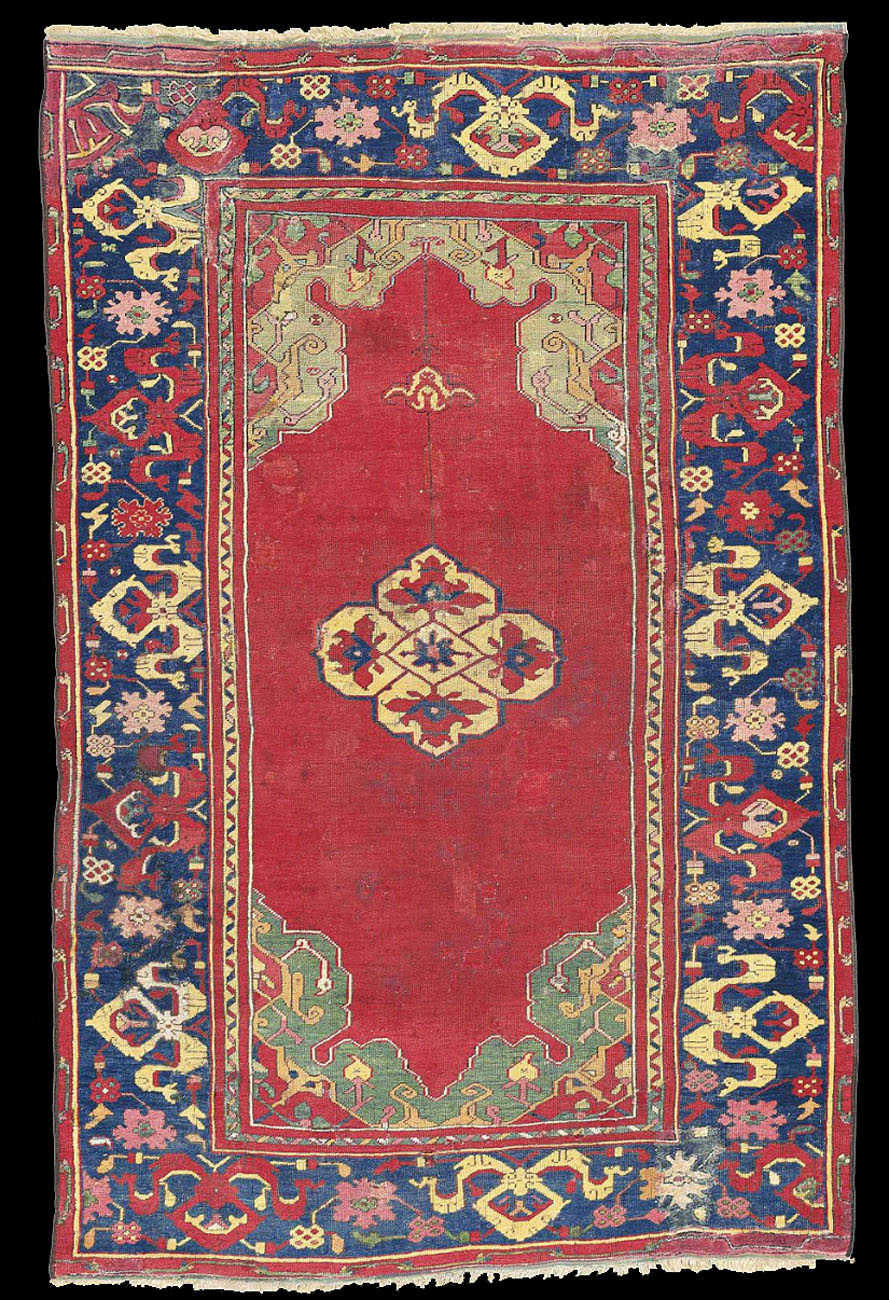|
Price Realized £59,475 ($90,699)
Sale Information
Christies SALE 1116 —
ORIENTAL RUGS AND CARPETS
23 April 2013
London, King Street
Lot Description
A SMALL MEDALLION USHAK RUG
WEST ANATOLIA, LATE 16TH CENTURY
Uneven overall wear, scattered areas of repair, outer stripe slightly
reduced, surface dirt
5ft.2in. x 3ft.4in. (157cm. x 102cm.)
Lot Notes
The earliest example of a 'double-niche' or 'small medallion' Ushak rug
appears in Europe in a painting by Girolamo da Santacroce, The Calling of
Saint Matthew' dating from 1517 (John Mills, 'The Coming of the Carpet to
the West', The Eastern Carpet in the Western World, exhibition catalogue,
London, 1983, p.16). Shortly after this, a rug of very similar design to the
present example is depicted in The Annunciation by Jacob Claes van Utrecht (O.Ydema,
Carpets and their datings in Netherlandish Paintings, Zutphen, 1991, p.40).
Pictorial evidence however suggests that very similar rugs continued to be
made throughout the century and into the next.
The present rug represents the second type of double niche Ushak rug, with
cloudband border. A very similar example is in the Keir Collection, but with
added elements in the longer field and with plain striped guard stripes
(Friedrich Spuhler, Islamic Carpets and Textiles in the Keir Collection,
London, 1978, no.24, p.52 and col.pl.p.54). The colouring of the border,
spandrels and medallion are identical. Other similar examples are published
in the Textile Museum (L.Mackie, The Splendour of Turkish Weaving,
Washington, 1973, no.36, p.36), the McMullan Collection, with central blue
medallion, (Joseph V. McMullan, Islamic Carpets, New York, 1965, no.83,
pp.262-3), the Metropolitan Museum (M.S. Dimand and J. Mailey, Oriental Rugs
in the Metropolitan Museum of Art, New York, 1973, no.81, p.224), the
Ballard Collection (James F. Ballard, Catalogue of Oriental Rugs in the
Collection of James F. Ballard, St. Louis, 1924, no.71), and with Herrmann (Eberhart
Herrmann, Seltene Orientteppiche X, Munich, 1988, no.5, pp.22-23). The
Textile and Metropolitan Museum examples together with the Ballard rug share
the yellow quatrefoil medallion seen in this rug. Most of these examples are
ascribed dates of the late sixteenth or early seventeenth century; the
Metropolitan dating of 'early XVIII century' one assumes is a misprint.
While there has been some old and crude restoration on this rug, the colours
have been superbly preserved, demonstrating the vitality of these rugs at
their best.
|


